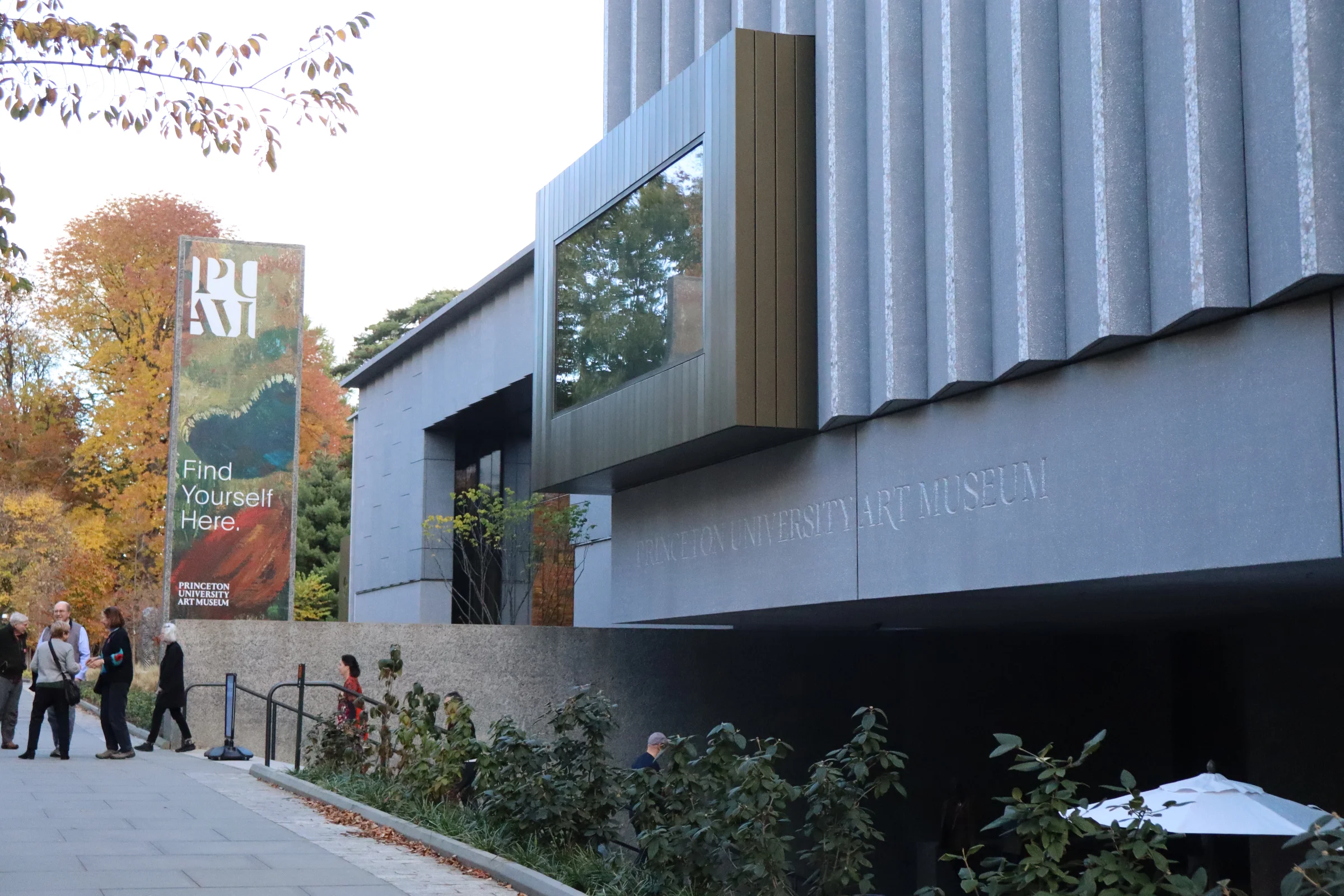Princeton University Art Museum reopens after five years
November, 2025
Photo: Katherine Chen
Nine interlocking pavilions make up the structure of the Princeton University Art Museum building.
The Princeton University Art Museum opened its doors to the public at 5 p.m. on October 31 for the first time since 2021. The new 146,000-square-foot building has been five years in the making and reopened on Halloween with a completely new facility, built on the site of the old museum that was demolished in 2021.
“I’m incredibly excited,” said Juliana Ochs Dweck, Chief Curator for the museum. “We’ve been working on this building for years, and I’ve been working on it in my capacity as the chief curator for over six years now.”
The new building, completed in the fall of 2025, features Princeton University’s art collection in a completely new light. Largely designed by the principal architect David Adjaye, the new museum is almost double the size of the old museum. Beyond space, however, Dweck shared a vision of creating a space of belonging for all the museum’s visitors.
“I hope that when the public comes, the building as a whole meets people where they are,” said Dweck. “I really hope that people find themselves and find works that speak to them.”
Given that the collection has an impressive 117,000 pieces of art, one of the goals for the new museum was more space to feature the art. According to Stephen Kim, Senior Associate Director for Communication & Information, only 2 percent of the entire collection was previously able to be featured in the old museum’s 2,500-square-foot space.
The new building also provides more than 12,000 square feet for educational spaces, such as creativity labs, six object study classrooms, two seminar rooms, and an auditorium.
The old museum’s structure had an upstairs featuring Western art and a downstairs presenting ancient and nonWestern art. While the galleries upstairs were open and received an abundance of natural light, the downstairs galleries lacked these qualities.
“Unconsciously, there was an implied hierarchy as if we were elevating the art of the West and somehow denigrating the arts of ancient and non-Western art. [The new building] radically moves away [from] any presumption of hierarchy, [putting] every collection… on one floor,” said Dweck.
The new museum launched with a 24-hour open house from October 31 to November 1. The open house included events such as a Halloween fair, a costume contest, dance party, movie screenings, trivia, and more. Additionally, the new museum features two new inaugural exhibits.
The first, “Princeton Collects,” highlights works from the over 2,000 artworks donated by alumni for the museum’s new building. Most notable among them are works from the artists Gerhard Richter, Mark Rothko, and Hans Hofmann.
“One of the qualities that the exhibition models is the ways that art from across times and place can be presented in dialogue with each other,” said Dweck. “We’re… modeling the ways that we teach and learn with collections, which is often by comparison and juxtaposition and conversation across time.”
“Toshiko Takaezu: Dialogues in Clay”, the other opening exhibit, featured the ceramic pieces of the artist Toshiko Takaezu. A professor at Princeton University for almost 30 years, Takaezu pioneered the form of closed ceramic pieces, positioning her as one of the eminent ceramic artists of the 20th century.
“[Takaezu] was able to get away from the sort of divide that the art world has created between … craft and art,” said Dweck. “Whereas the ‘Princeton Collects’ is taking this vast encyclopedic look at collections and the pedagogic work that they can do, this is a more intimate focus on a single artist and a celebration of one particular form of materiality”.
The museum will continue to feature new special exhibitions and galleries, hoping to feature betweensix and ten special exhibitions each year.
“The installation for day one is set, but it will continue to evolve and to sort of react like an organism to the people who use the space,” said Dweck. “The real conversation with our publics, which includes you and your peers and students on campus, only begins when we actually open.”